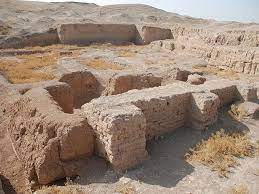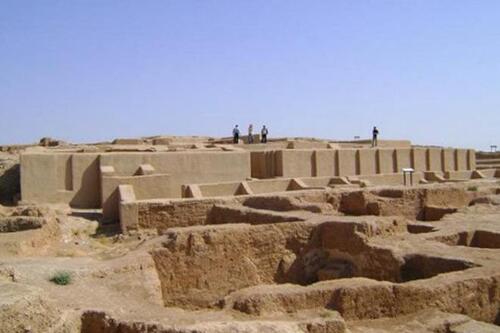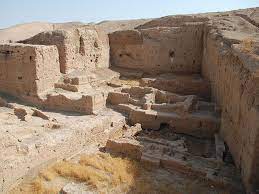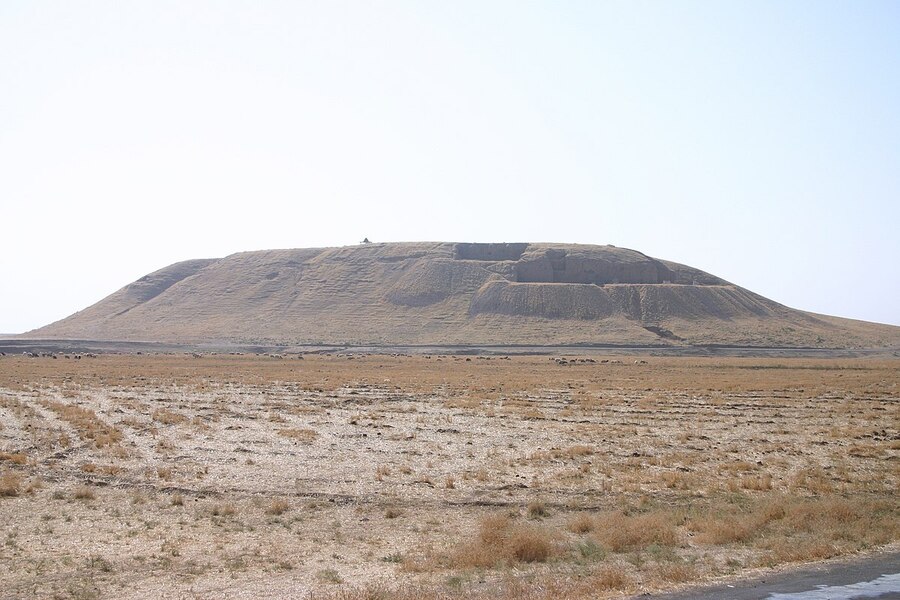Kurdshop - Tal Brak Hill has a history of 6000 years. In ancient history, Jazira was the target of powers because of its strategic location.
The Jazira region in the West part of Kurdistan is known for its historical hills. The ancient hills of the area contain many monuments, confirming their role in ancient history. Tal Brak is one of the places that has played a role and left its mark on history.
Tal Brak is located northeast of Hasaka in the West part of Kurdistan, 40 kilometers from the city center. It is also 45 kilometers southwest of Qamishlu. This hill is located on the road between the cities of Hasaka and Qamishlu, on the banks of the Jaq River.

Tel Brak is the largest hill in the Jazira region. The hill is 800 meters long and 600 meters wide. Around this large hill, there are many small hills dating back to 4000 BC. At that time, the area of Tal Brak as a city was 1000 hectares, but the city is older than that, as the remains date back to 6000 years BC.
This place was strategically located in ancient times, so it became a trading center among the ancient East, Syria, Anatolia, and Mesopotamia.
The oldest excavations at Tal Brak were conducted by the French archaeologist Pierre Bodebard between 1927 to 1928.
In 1976, a British delegation from the University of London, led by David Oates, began research at Tal Brak. The remains of Tal Brak date back to 4000 to 6000 BC. From the beginning of the sixth millennium BC, the civilizations of the societies of the ancient East showed their differences. Every community has developed in a specific way. Monuments dating back to the Tal Khalafian culture have been found at Tal Brak. According to the remains found, it is clear that this village was an important village of Tal Khalaf. It also states that it had strong ties with Mesopotamia.

The name Khalaf comes from the area called Tal Khalaf, northwest of Sarekani on the banks of the Khabur River. The civilization was discovered by the German archaeologist Fon Omen Hi. The history of this civilization dates back to five to six thousand years BC. This region extends from the Euphrates River in the west to the Great Zap River in the east; as an arc that was the northern boundary of Mount Taurus.
With the beginning of 4000 BC, a new era called the Uruk period began at Tal Brak. The civilization, also known as the Dawn of History, is located on the Euphrates River, 30 kilometers southeast of the southern Iraqi city of Samawa, where the remains of the civilization were first discovered. The importance of this period is due to the changing way of life of ancient civilizations. At that time civil and religious writings and seals were used, and bronze was used for the first time as various weapons and tools.
Part of the history of Tal Brak dates back to the Nineveh civilization, which has five hills, and the Khabur civilization. However, the strategic location in the civilization of Nineveh is Leylan Hill, which is now on the border of Western Kurdistan. Several civilizations came to the region in the past, one of which was the Akkadian civilization. The Akkadians established their empire there and took control of Syria and northern Mesopotamia. Tal Brak was also an important Akkadian center. Many of their remains were also found, the most interesting being the Akkadian Palace.

According to the British delegation that investigated Tal Brak, the identity and name of Tal Brak at that time was Nagara. The inscriptions found at Tal Laylan refer to Nagar. According to these inscriptions, there was an agreement between the king of Tal Laylan or Laylan Hill and the king of Kakht.
Kekht, now called Tal Bari, is near Tal Brak. The name of Nagar also occurs in Ebla inscriptions. These texts refer to trade relations between Ebla and Nagar. Tal Brak was known for its importance and, along with Orkesh or Mozan Hill and Tal Beder, played an important role in the political and civilizational history of the Jazira and Euphrates regions.
Research in various parts of Jazira has confirmed that this area was under the rule of the Mitannis. Excavations at the sites of Tal Brak confirmed that this site was one of the main cities of the Mitanni Empire.
Most of the sculptures found there represent the goddesses who show the beauty of the women of that time. Most of the sculptures found were made of metal, and most of them are now in the museums of Aleppo, Dajr az-zaur, and Britain.








